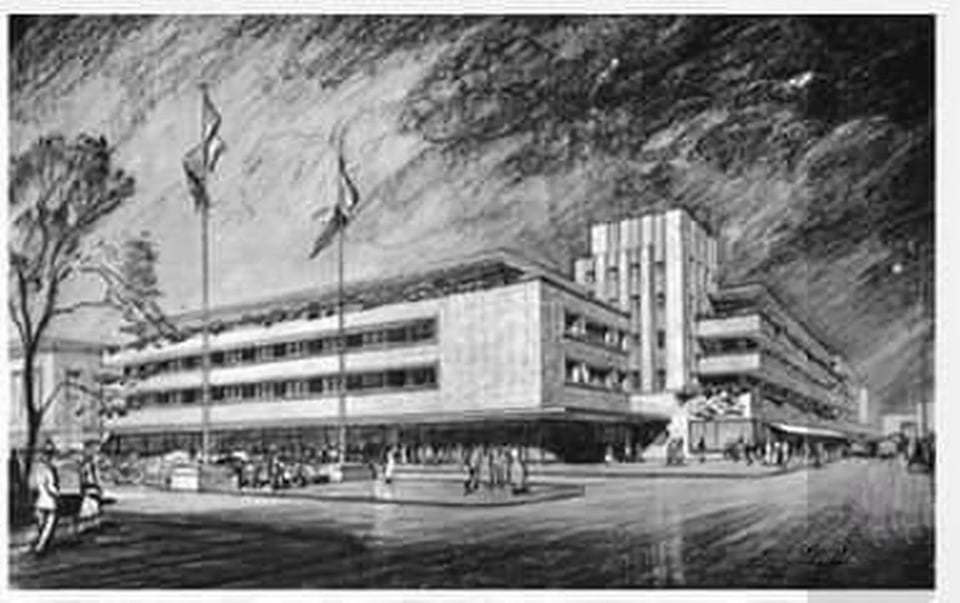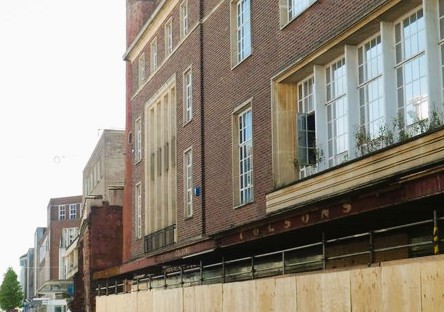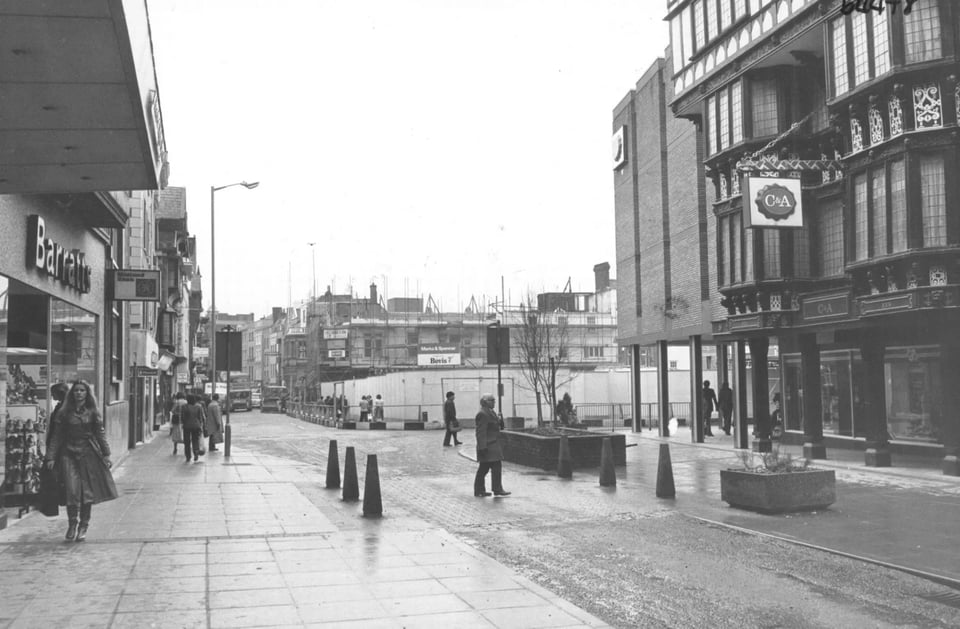Field Notes: 19 March 2025
What's to become of those postwar behemoths of the high streets, the department store? Also woman at C&A, and a round up of news items.
I’m having decision paralysis on a deep dive subject for March. Two of the buildings I’d like to talk about need more research or more responsive owners. I might need to do a desk-based piece on something Deco.
Dinosaurs of a more prosperous age

There’s a specific air to a dying department store, I think. A sparseness where there was once sparkling luxury. More and more names hidden by stickers on the store index by the escalators. Lights are harsher, colder. The store itself is colder, because there are less people in it. No-one is waiting by the make-up counters to make you try a perfume.
In Plymouth last month, I stopped for a coffee inside House of Fraser, once the flagship store of Dingles, a beloved west country chain.

It was my second visit in the last year. The building is huge, a 1950s stone clad department store on the corner of Armada Way and the Royal Parade. It’s an anchor building of the great Abercrombie post war city plan. Dingles meant something to the people of Plymouth. My aunts shopped there.
And on both recent visits it felt like I was intruding into a dying beast’s lair.
The House of Fraser in Exeter felt the same back in 2019 as it waited to be put out of its misery. All the Debenhams, like this 1950s one in Taunton, felt like it. Jolly’s in Bath must have felt like it: worse perhaps, given it had lived for nearly two hundred years. A new owner for Jolly’s has been announced this week.
The former House of Fraser building in Exeter has had a multi-million pound makeover. It’s now mixed use, with retail units on the ground floor, and a boutique hotel and restaurant above. I still think of it as Dingles, but in stripping away decades of rebrands, the developers found the original 1950s canopy struts, with a ghost sign for its first name. They’ve called one of the bars after it, bringing back to life a name and a woman. Mrs Colson had opened her millinery in 1792, also selling tea and silk. Colson’s survived the Exeter blitz, but was bought out by Dingles.

The entire Colson’s block in Exeter has already been sold on once, but for less than its asking price.
There are plenty of stories of people campaigning to do something with these dying dinosaurs of a more prosperous age. It remains to be seen if the attempted revival of Colson’s works, or if it can be replicated elsewhere. If it does work, there are a lot of midcentury department stores that could be resurrected.
House of Fraser in Plymouth isn’t closed (yet) but here’s Dingles rising from the ashes in on this video of postwar Plymouth (copyright The South West Film and Television Archive). It should start in the right spot: if not, scroll to 2 minutes in.
Meet me at C&A corner
Back in the 1980s there was a large, brick planter with benches set in it just across from Exeter’s Dingles (as it was then). This was the place to meet your mates, and went by the alliterative nickname of C&A corner. I was delighted to spot this photo of it in the late 1970s.

I’ve just read one of those local studies photo books where the author dislikes anything that happened to the place after they’d grown up. They described the C&A building as “one of the worst decisions in the postwar history of Exeter”, which is pretty strong stuff. Exeter did all kinds of dreadful things. The old buildings on this plot were just a classical-inspired Victorian terrace with an overhanging bay window that failed to line up to the bays of the 16th century house next to it.
As this photo shows, the brutal brick-clad C&A building has pillars to continue the colonnade and heavier stone lines across its facade which align with its neighbour’s floor lines.
Local news of C20th buildings
In which I fight my way through local ad-laden news sites to find stories about twentieth century buildings and related topics.
Torbay conservation survey
Torbay are running consultations to update the conservation area appraisals for Torquay Harbour, Paignton Old town and Brixham Town. they were last looked at 15 years ago. You can dig into the papers online and send in any comments by 7 April.

New conservation area appraisals consultation - Torbay Council
Have your say on surveys for our new conservation area appraisals
Beazer good
The 1966 Beazer House office building in Bath is being demolished to make way for a Premier Inn. Looking at the developer’s proposals, it’s a little unclear why it’s not economically viable to convert the building, reducing the environmental impact of demolishing and rebuilding. I’ve definitely stayed in worse Premier Inns than that.
Getting in a Picklecombe
The delightfully named Fort Picklecombe at Maker in Cornwall is literally across the water from Plymouth. Originally built during the Napoleonic wars, it was converted into apartments in the 1970s, and is Grade II listed. One of the apartments is for sale, if you have £400K going. No original features (1970s or Napoleonic) by the looks of it though.£395,000
If you know of an event or news item you think I should know about, you can contact me on Bluesky.
Meet me at C&A corner, yeah? And we’ll head down Truman’s to get some stripey tights.